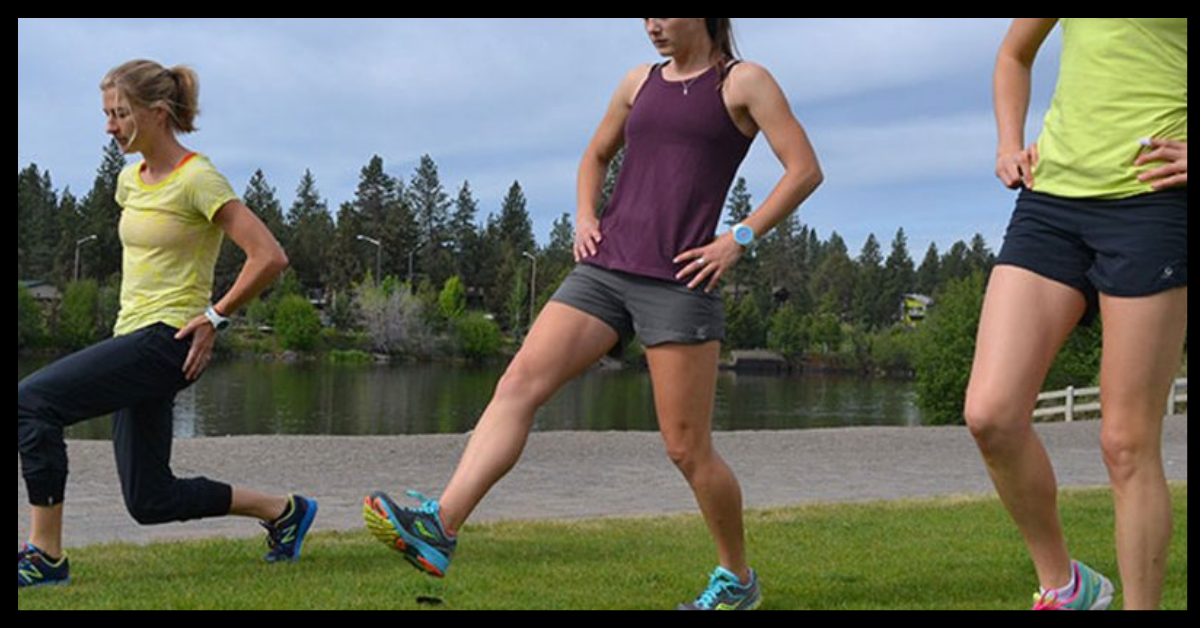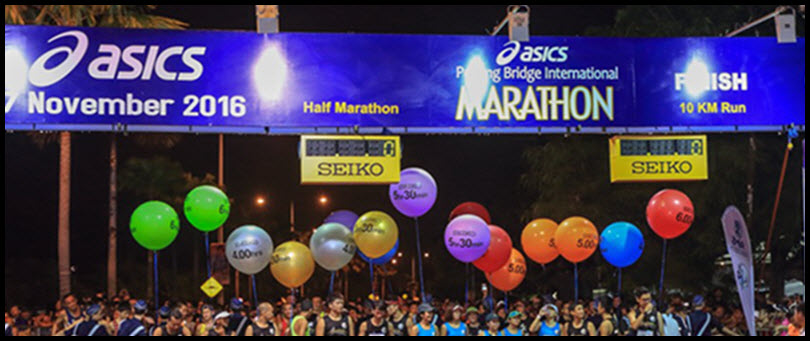Why Should You Warm Up?
Warming up will help prepare your body for the event to come. Warm-ups will vary, depending on the race you’re warming up for, your current level of fitness, and what sort of access you have to a warm-up area.
- increases the flow of blood and therefore delivery of oxygen to the working muscles
- increases body temperature which will speed the flow of oxygen throughout the body
- helps to reduce the risk of injury by lubricating the joints and tendon sheaths
- helps the heart and blood vessels to adjust to the body’s increasing demands that will be placed upon them
- improves messaging between the brain and the working muscles which will improve muscle power and contraction
- a tried and tested warm-up routine which you run through before each race (or hard workout) can settle any pre-race nerves, and get you in the right frame of mind to race
Warming up for a half marathon or marathon
If you are around the 2 hour mark for a half marathon, or you’re running a longer distance, follow the steps below to warm up. If you’re more around the 90 minute mark or better for a half marathon, this doesn’t apply so much to you.
With a race that’s around two hours or more in duration, one of the prime things you need to take into account when warming up, is preserving your energy. You want to use as little glycogen as possible before the race starts.
- Wake up at least a couple of hours before your race. It takes at least 2 hours to get your body temperature up to optimal level and for you to become fully awake.
- As soon as you wake up, go for a light jog or walk for 10 minutes. If you’re running, be sure to keep it very easy.
- Include some light stretches. Stretch out anything you know tends to tighten up. Include some lunges forward and backwards as part of your stretching.
- When you’ve finished your light warm up, have breakfast. This is important as it will help to replace any glycogen you’ve lost overnight, and in your warm-up shuffle.
- Use the loo. That little warm up shuffle gets every muscle primed, including those of your digestive system!
At the starting line
Unless you’re an elite runner, you’ll be standing at the start for quite a while.
- Keep warm. Wear old clothes which you can throw away. (They’ll be collected and given to charity). You want to expend as little energy as possible at this stage of the proceedings, so the last thing you want is to be using your energy to keep warm.
- If it looks like rain, wear a rain poncho or an old garbage bag. You can put old shopping bags on your feet to keep your shoes dry. You might want to think about wearing an old pair of shoes you can throw away, or at least take a fresh pair of socks you can change into just before the start. There’s nothing like starting off in dry feet-even if it lasts less than a minute!
- Keep these clothes on for as long as possible. You don’t have to take them off before the start. You can run the first 5 minutes or so in them, then take them off and leave on the side of the course. This doesn’t really apply to tracky dacks of course, but a light jumper and some gloves are easy to shed once you warm up.
- Warm up your legs by doing lunges and squats, and leg swings. Ideally, this won’t be the first time you’ve ever done a lunge before a run! It’s always good to practice these things prior to race day.
The first few kilometres
- The rest of your warm up will really happen in the first couple of kms of a 2 hour run. It’s not that critical to be primed to blast off as soon as the gun goes. You want to be a bit slower than your goal race pace in the first few kilometres anyway. This will give you a chance to get a handle to how you’re feeling on the day, and the sort of pace you will be able to settle down into.
- Be careful not to get caught up in the excitement of the race. Always think of the first 2k as a chance to complete your warm up and test the waters as far as how you’re feeling on the day.
Warming Up for a 5k, 10k or a Fast Half Marathon
- Start your warm up about 40 minutes before the start time. This will give you time to warm up and get to the loo before the race.
- Have a very easy run for around 10 minutes. It should not feel difficult at all
- If you normally stretch before a workout, you can stretch for 5-10 minutes. If you don’t normally do that, don’t start now. Some dynamic stretches such as lunges, ankle rotations, and leg swinging can help to loosen you up for the race. Holding a prolonged, strong static stretch is not recommended prior to racing. (For example a hamstring stretch which you find a bit painful and you hold for 30 seconds or more)
- Run 3-4 thirty-second efforts, at a pace slightly above your goal race pace. You should use the first one to build into that pace. Have 1-2 minutes rest between each of these.
- Go the the loo
- If you’re going to be standing around before the race start, keep warm, and shed clothes just prior to the start.
Ideally, this warm up routine would finish about 5 minutes before the race start. It’s the nature of large fun runs that you won’t be able to do this though. There are usually queues for the loo, and often not much room to warm up. Try to finish your warm up as close as possible to the race start time. You need to balance this between the panic you feel when you’re still in the loo queue when there are two minutes till the start!


